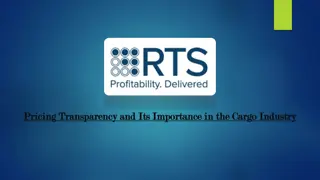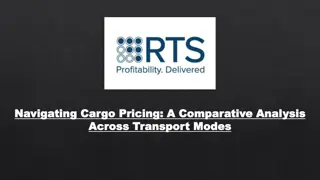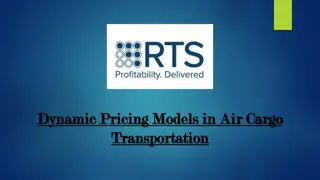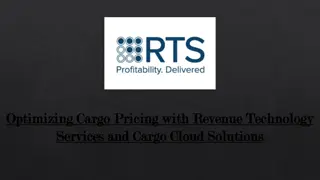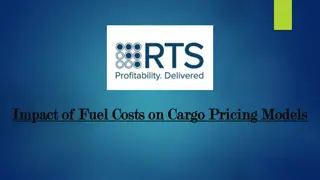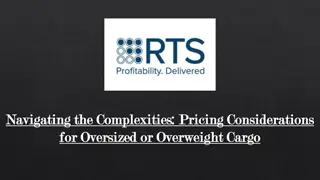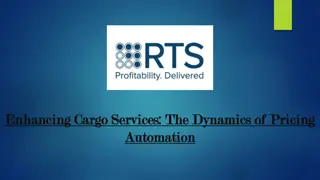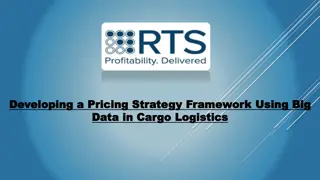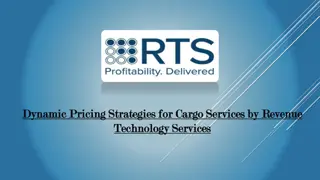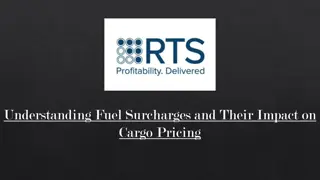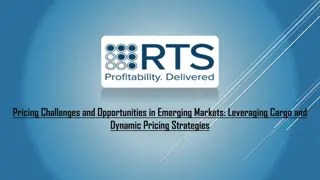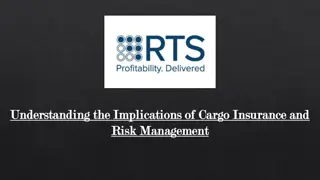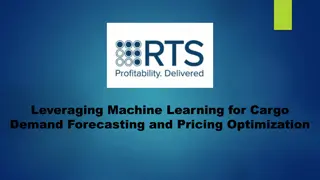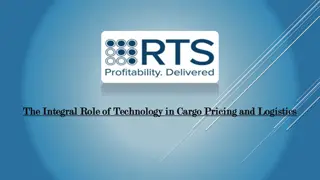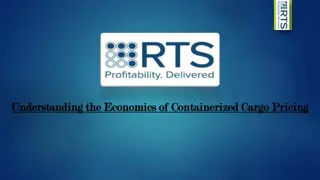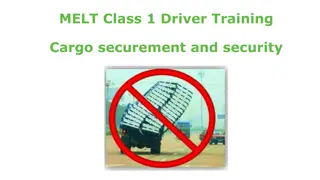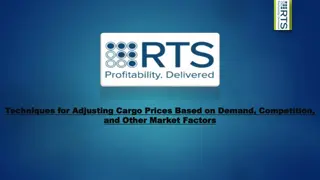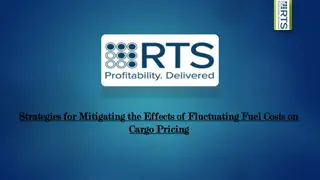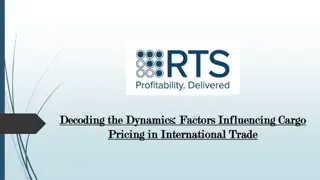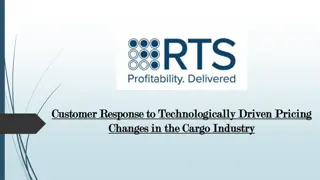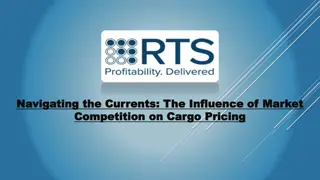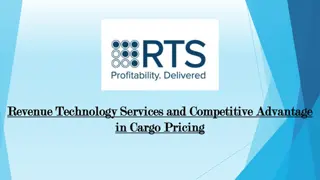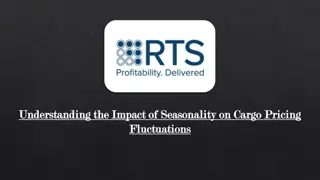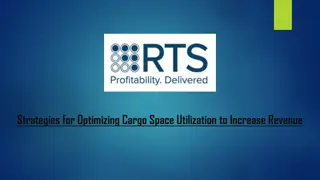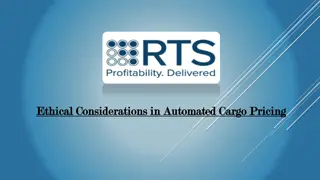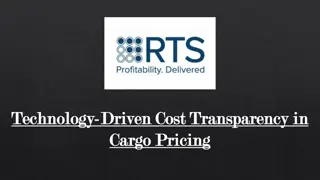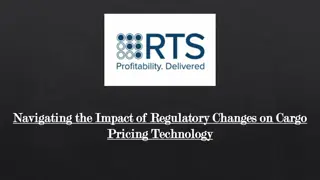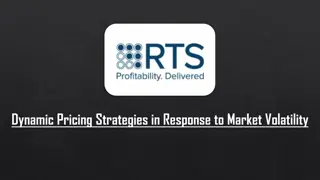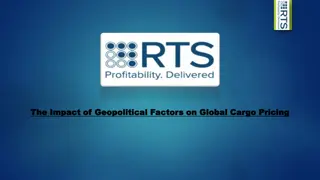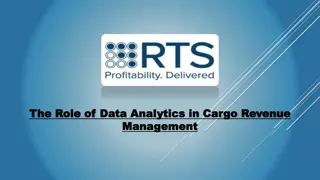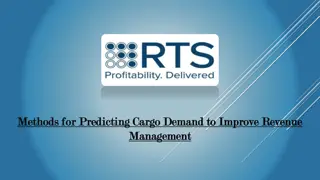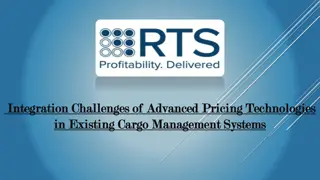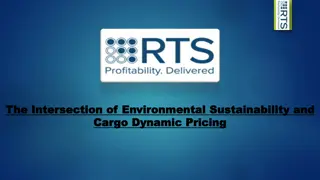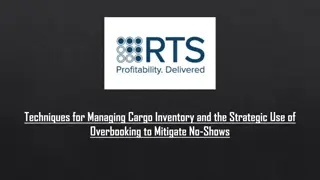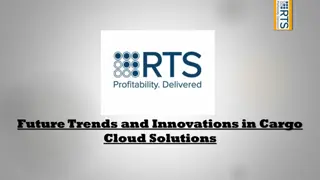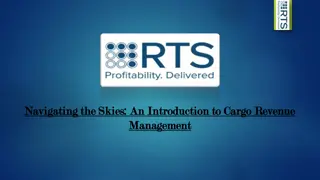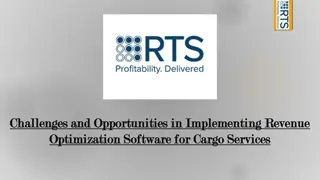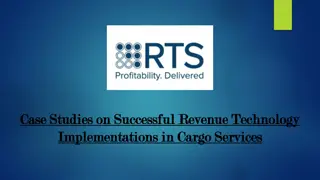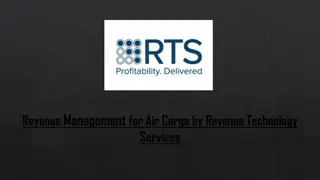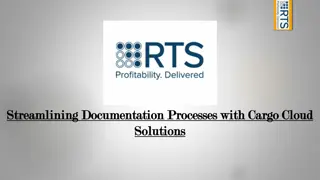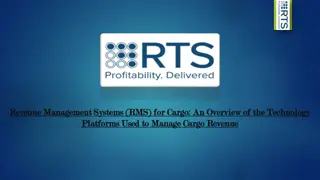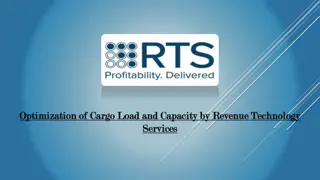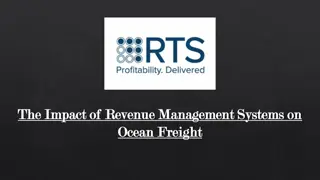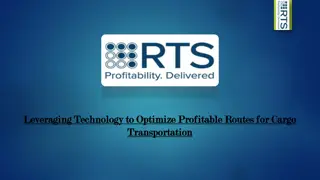
Cargo Pricing Strategies Across Transportation Modes (1)
In the realm of logistics and transportation, pricing strategies play a pivotal role in shaping revenue streams and fostering competitiveness. The dynamics of cargo pricing are particularly nuanced, influenced by factors ranging from infrastructure costs to market demand and operational efficiencies. As goods traverse the globe through various modes of transportationu2014air, sea, road, and railu2014distinct pricing strategies emerge, tailored to the unique attributes and challenges of each mode.n
Uploaded on | 3 Views
- cargo cloud solutions
- cargo pricing
- cargo revenue management
- cargo solutions
- cargo strategy consulting
Cargo Pricing Strategies Across Transportation Modes (1)
PowerPoint presentation about 'Cargo Pricing Strategies Across Transportation Modes (1)'. This presentation describes the topic on In the realm of logistics and transportation, pricing strategies play a pivotal role in shaping revenue streams and fostering competitiveness. The dynamics of cargo pricing are particularly nuanced, influenced by factors ranging from infrastructure costs to market demand and operational efficiencies. As goods traverse the globe through various modes of transportationu2014air, sea, road, and railu2014distinct pricing strategies emerge, tailored to the unique attributes and challenges of each mode.n. Download this presentation absolutely free.
Presentation Transcript
Navigating Revenue: Cargo Pricing Strategies Across Navigating Revenue: Cargo Pricing Strategies Across Transportation Modes Transportation Modes
In the realm of logistics and transportation, pricing strategies play a pivotal role in shaping revenue streams and fostering competitiveness. The dynamics of cargo pricing are particularly nuanced, influenced by factors ranging from infrastructure costs to market demand and operational efficiencies. As goods traverse the globe through various modes of transportation air, sea, road, and rail distinct pricing strategies emerge, tailored to the unique attributes and challenges of each mode.
Air Transport: Speed Comes at a Premium Air Transport: Speed Comes at a Premium Air transportation is renowned for its unparalleled speed, making it the preferred choice for time-sensitive cargo. However, this expedited service comes with a hefty price tag. Cargo pricing in the aviation sector typically follows a dynamic pricing model, where rates fluctuate based on factors such as demand, fuel costs, and capacity utilization. Air carriers often employ yield management techniques, optimizing revenue by adjusting prices in real-time to match supply and demand dynamics. Additionally, premium services such as express delivery and specialized handling commands premium rates, catering to the urgent needs of customers. Sea Sea Freight: Balancing Affordability with Transit Time Freight: Balancing Affordability with Transit Time Sea freight offers a cost-effective solution for transporting bulk cargo over long distances. Pricing strategies in maritime transportation are influenced by factors such as vessel capacity, route density, and seasonal demand fluctuations. Shipping lines may adopt a variety of pricing models, including spot rates, contract rates, and freight indices. Spot rates fluctuate based on market conditions, providing flexibility but also exposing shippers to volatility. Contract rates offer stability through long- term agreements, often negotiated based on volume commitments and service levels. Moreover, Moreover, carriers may differentiate pricing based on container type, cargo characteristics, and value-added services such as refrigeration or hazardous goods handling. By balancing affordability with transit time, sea freight remains a cornerstone of global supply chains.
Road Transport: Flexibility and Last Road Transport: Flexibility and Last- -Mile Connectivity Road transportation provides unmatched flexibility and connectivity, particularly for regional and last-mile delivery. Pricing strategies in the trucking industry are influenced by factors such as fuel costs, labor expenses, tolls, and vehicle capacity utilization. Mile Connectivity Freight rates in the trucking sector may vary based on distance, weight, volume, and delivery urgency. Additionally, factors such as route congestion, driver availability, and regulatory compliance can impact pricing dynamics. Freight brokers and digital freight platforms play a crucial role in matching shippers with carriers while optimizing pricing and routing efficiency. Rail Freight: Leveraging Efficiency and Scale Rail Freight: Leveraging Efficiency and Scale Rail freight offers a cost-effective solution for long-haul transportation of bulk commodities. Pricing strategies in the rail sector are shaped by factors such as distance, route density, equipment utilization, and intermodal connectivity. Rail carriers often leverage economies of scale and operational efficiencies to offer competitive rates for bulk cargo transportation. Pricing models may include tariffs based on distance, weight, and commodity type, with discounts available for high-volume shippers and long-term contracts. Furthermore Furthermore, railroads may collaborate with intermodal partners to offer seamless door-to-door solutions, integrating rail transport with other modes such as trucking and maritime shipping.
Conclusion: Orchestrating Revenue in the Cargo Landscape Conclusion: Orchestrating Revenue in the Cargo Landscape In the complex ecosystem of global trade and logistics, pricing strategies serve as a critical lever for revenue optimization and market competitiveness. Across air, sea, road, and rail transportation modes, cargo pricing strategies are tailored to meet the diverse needs of shippers while balancing operational costs and revenue objectives. By leveraging technology, data analytics, and industry expertise, transportation providers can navigate the intricacies of cargo pricing, driving efficiency, and value across the supply chain. In an ever-evolving landscape, agility and innovation remain essential for unlocking new opportunities and sustaining growth in the dynamic world of freight transportation.
THANK YOU THANK YOU

